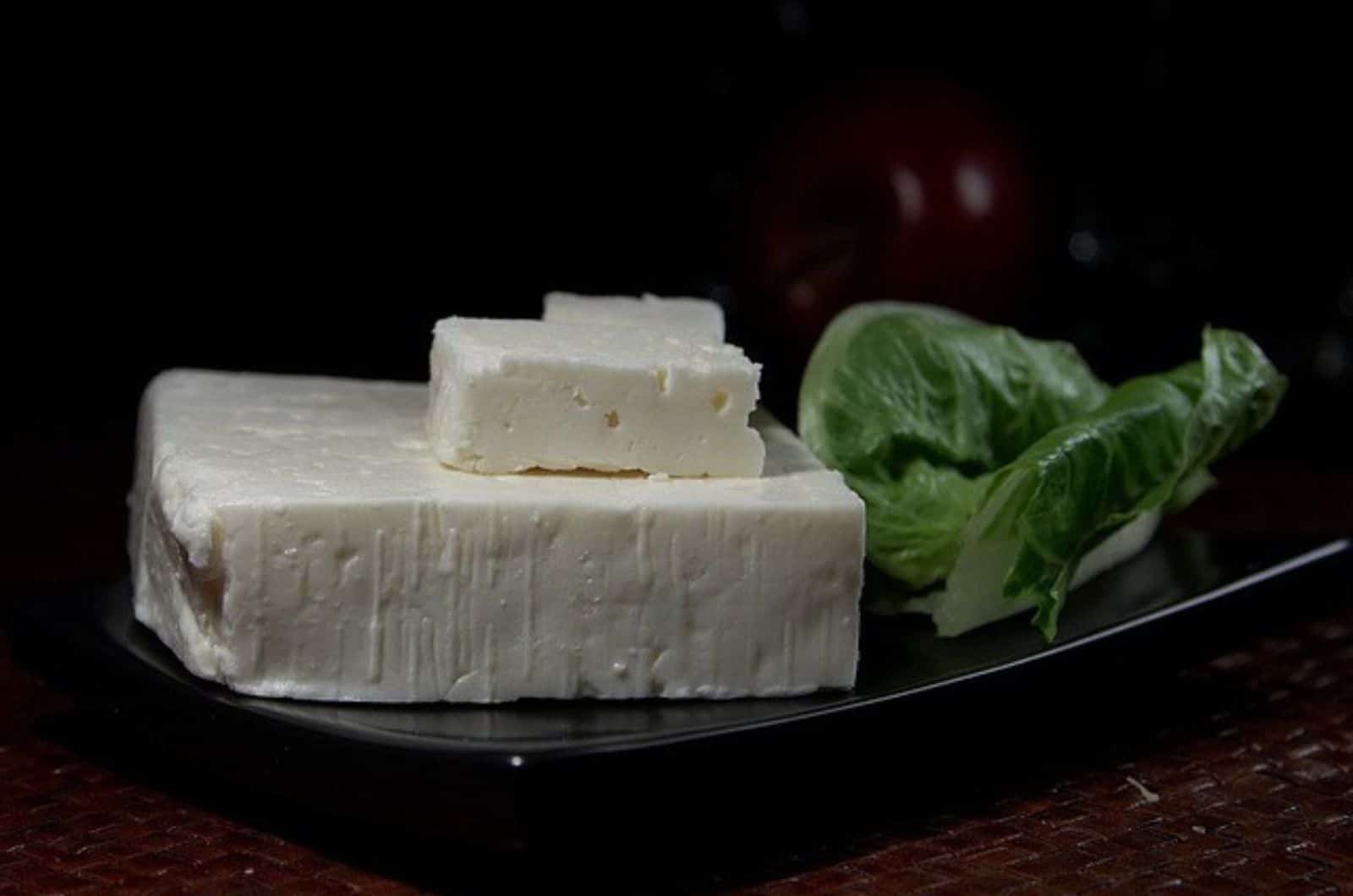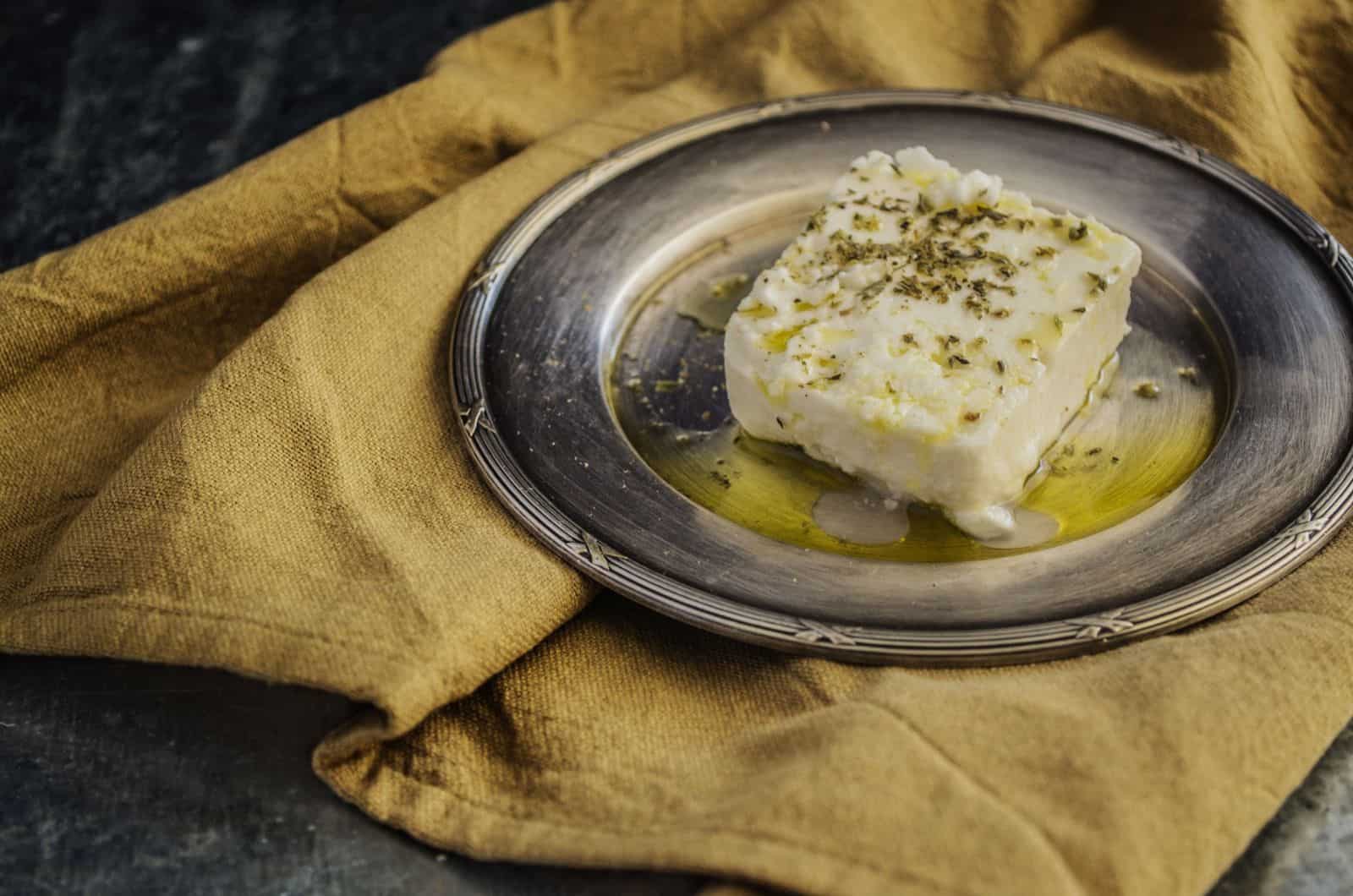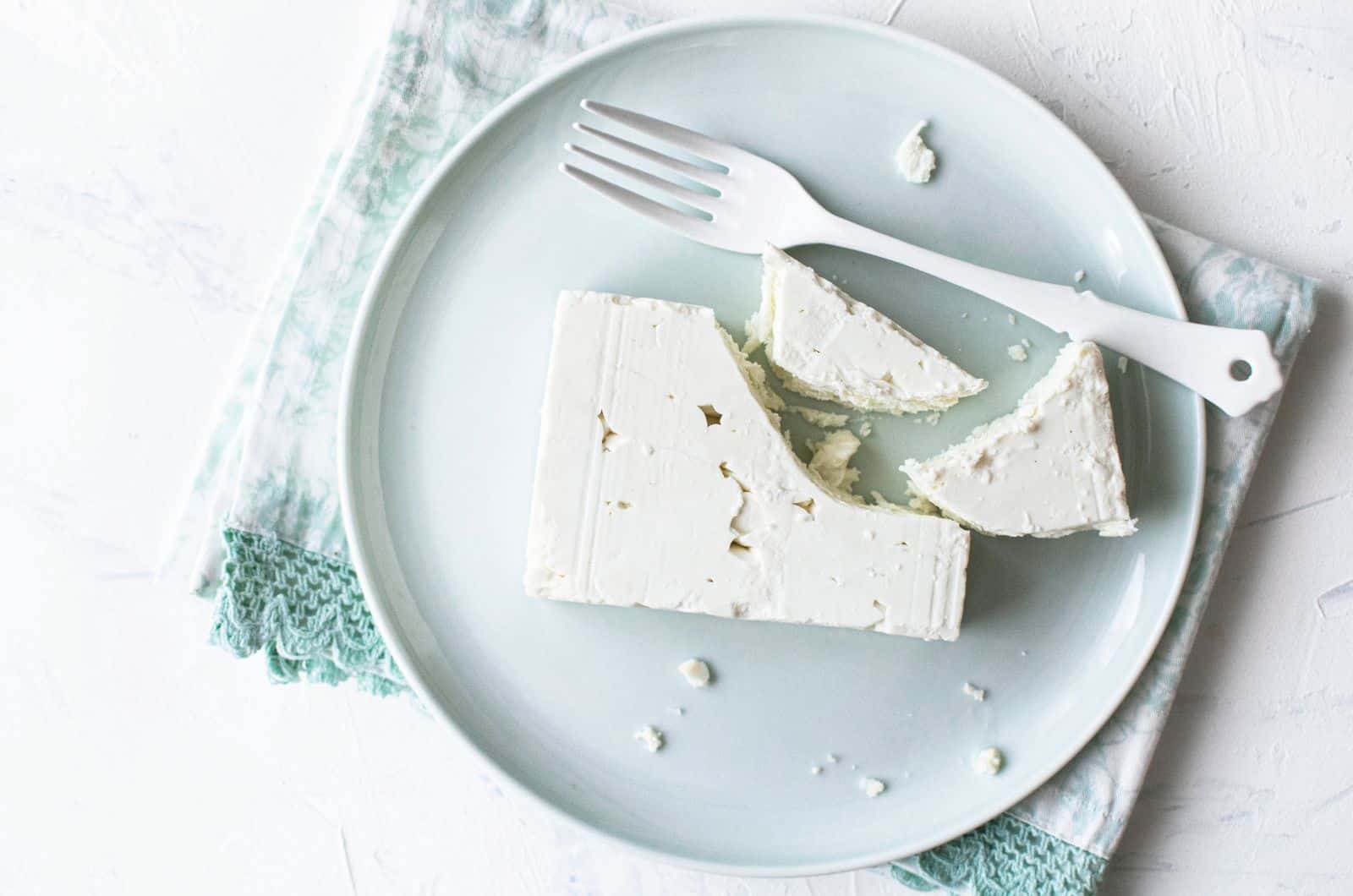Recently, as I was preparing a grilled cheese sandwich for my darling, I added some feta cheese as well. And then it struck me: Wait, does feta cheese melt?
I’ve never seen this cheese melting in my life, no matter the food I prepare! I also did my research, which confirmed that feta cheese doesn’t melt. How epic is this cognition, right?
Now, the question is: Why doesn’t it melt, and are there any possible ways to make it “melty” (or at least attempt to do so)?
You’ll find all the answers to these questions below!
Does Feta Cheese Melt?

Quick repeated answer: NO. Feta cheese doesn’t melt in a typical way, but this cheese actually responds to heat in its own unique way. Not all types of cheese melt like melted cheese on pizza (read: cheddar or mozzarella).
Feta cheese can become soft and melty when heated up, but it doesn’t melt down to a liquid state like some other cheeses. Why? Because feta cheese has a much higher acid content than other cheeses, which we will explain below in detail.
If you’re interested, here are some more examples of cheeses that don’t melt: cotija, Italian ricotta, queso panela, paneer, queso fresco, cottage cheese, halloumi, queso blanco, blue cheese, mascarpone, creamy goat cheese, and quark.
Also, here are some types of cheeses that actually melt easily: Camembert, Brie, Gouda, mozzarella, Parmesan, or cheddar cheese, and other aged cheeses.
Why Feta Cheese Doesn’t Melt
Now that we have answered the famous question: Does feta cheese melt? it’s time to answer why feta cheese doesn’t melt.
In ancient Greece, feta cheese was originally made from goat milk and sheep milk. Today it’s mostly made of cow’s milk.
Unlike cheddar or other “highly melting” cheese, feta cheese has high moisture content and high acid content. What does this mean? It has a lower melting point due to the high acidity, unlike other easily melty cheeses.
High acidity levels in feta cheese cause the calcium to dissolve, which makes it difficult to melt. In a nutshell, when you try to heat up cheese that contains a high acid content, its protein bonds tighten and get rid of any water that can be found in the cheese.
In this case, the feta cheese protein will keep solidifying instead of melting, which puts this cheese in the difficult-to-melt-cheese category.
But not all hope is lost! There are actually ways you can melt this cheese, which you’ll find below.
The Pros Of Feta Cheese Not Melting

Before jumping into crying mode due to your feta cheese not melting (I’m trying to be sarcastic here 😂), we need to focus on its benefits. Not all cheese will melt easily, and that’s the beauty of it.
Feta cheese can be used in lots of delicious dishes where you can use heat without worrying that it will liquefy the cheese. Here are some delicious ideas where you can add some feta cheese:
• Use feta cheese to stuff chicken.
• Add it to your favorite kabobs.
• Bake cheese balls.
• Grill some feta cheese (that sounds YUMMY!)
• Crumble it over salads (my personal favorite).
• Use it in Greek or Mediterranean dishes.
Do you like these ideas? If you do, then follow me for more advice. Just kidding!
How To Soften Or Melt Feta Cheese

Does feta cheese melt? Not really, but there are some things you can do to help it soften or become melty! Here’s how you’ll do it:
1. Add lemon juice
Add some lemon juice to your feta cheese because this will soften it. The lemon juice will also add some moisture to the cheese and calm the “calcium conflict.”
All you need to do is crumble the feta cheese before melting (because crumbled feta cheese melts quicker) and add lemon juice to it. Let it boil on the stove, put it in the oven, or put it in the microwave until it starts melting.
2. Add white wine
If you don’t have lemons on hand, you can also use white wine as an alternative. White wine will also help the cheese soften.
Before pouring over some wine, make sure you crumble the cheese because large blocks of feta cheese need more time to soften.
White wine will also add some much-needed moisture for the cheese to soften and become melty. Again, you have two options when it comes to heating: you can heat it on the stove or in the microwave.
3. Microwave feta cheese with cornstarch and milk
Does feta melt? Yes! Probably the easiest solution is to melt the cheese in the microwave. Before putting it in a microwave, bring the cheese to room temperature for a few minutes.
Then crumble the cheese into small pieces and add a pinch of cornstarch and a splash of milk to it. Milk and cornstarch will help it quickly form a creamy texture.
I recommend melting this feta mix at a medium heat in the microwave and make sure to stir it thoroughly after you take it out. Feel free to repeat the process until you reach the desired consistency.
PRO TIP: Don’t microwave feta cheese in its original plastic container because it might melt along with the cheese. Instead, put it in a microwave-safe container or on a microwave-safe plate.
4. Combine it with a melting cheese
If you want your feta cheese to be slightly melted, here’s one brilliant idea you should try: combine it with a melting cheese. Why? Because the melting cheese will help the feta cheese soften.
Just make sure to crumble the feta cheese and mix it well with the melting cheese. Put it on the stove or use the microwave. This is a genius idea (especially if you plan on mixing different cheeses).
How Long Should You Microwave Feta Cheese?

Feta cheese doesn’t need much time to start softening and melting in the microwave. You can melt it at high heat for approximately 30 seconds, or you can melt it at medium heat for 30+ seconds.
Keep in mind that you might need to repeat the process several times. If your cheese didn’t melt well the first time you put it in the microwave, then repeat the same process for 10 to 20 seconds.
If you add lemon, white wine, or cornstarch and milk, this will accelerate the melting process. In that case, there will be no need to re-heat it.
Does Feta Cheese Taste Good Melted?
Yes! Feta cheese maintains its original flavor regardless of whether it’s melted or not. So, if you’re worried about it losing its “divine flavor,” that will not happen.
The only thing that will change is its texture. However, it will not change drastically, given that feta cheese cannot completely melt like other melting cheeses.
The only reason feta cheese would taste different after being melted is if you combine it with lemon, white wine, or cornstarch and milk. Adding these ingredients accelerates the melting process and helps the feta cheese soften.
So, yes, if you add some white wine or lemon to it, the original flavor will change slightly into feta cheese with a dash of lemon/white wine.
How To Use Melted Feta Cheese
If there’s one thing I’ve learned so far, it is that melted soft cheeses are extremely complementary as a creamy feta cheese sauce for tomatoes. If you add some olive oil and bell pepper to it, you will create a divine flavor.
Basically, you can use melted feta cheese for the same dishes you would use unmelted feta cheese. You can use melted feta cheese for tacos, salads, pasta dishes, pierogies, or with various Greek or Mediterranean dishes.
Also, I’ve read somewhere that melted feta cheese goes really well with fresh melon.
I haven’t tried it yet, but I definitely will. Combining feta cheese and melon sounds really weird at first, but I’m sure there is something special about it, so I’ll definitely give it a try.
I recommend doing the same because you’ve got nothing to lose, right?
Tips For Storing Melted Feta Cheese
Unlike fresh feta cheese, melted feta cheese loses its freshness quickly. Because of this, you should melt it sparingly. Melt only the amount that you will immediately use.
You don’t want to melt too much of it and then end up throwing it away. Additionally, here’s a “feta hack” that I always use after opening feta cheese:
Add some salt and water to it because this will keep it from drying out. This method allows you to store feta cheese in the fridge for longer than a week. Also, keep in mind that you shouldn’t consume feta cheese if it was outside the fridge for longer than 2 hours, as recommended by the USDA.
Another option is to freeze feta cheese which is something I do when I buy more feta cheese than I plan on eating in the near future.
Conclusion

Does feta cheese melt? No, feta cheese doesn’t really melt, but it can soften and become melty. You can melt it on the stove, in the oven, or in the microwave.
Adding lemon juice, white wine, or cornstarch and milk to feta cheese accelerates the melting process. The moisture of these ingredients helps the cheese soften quicker.
Melted feta cheese tastes the same as fresh feta cheese. The only time it might slightly change its flavor is if you add lemon juice, white wine, or other ingredients to it.
Melted feta cheese can be used in various dishes and salads. My favorite use of melted feta cheese is as a creamy sauce for tomatoes (I also add some olive oil to it).
What’s your favorite use for softened or melty feta cheese? I bet you have more than one! 😄
